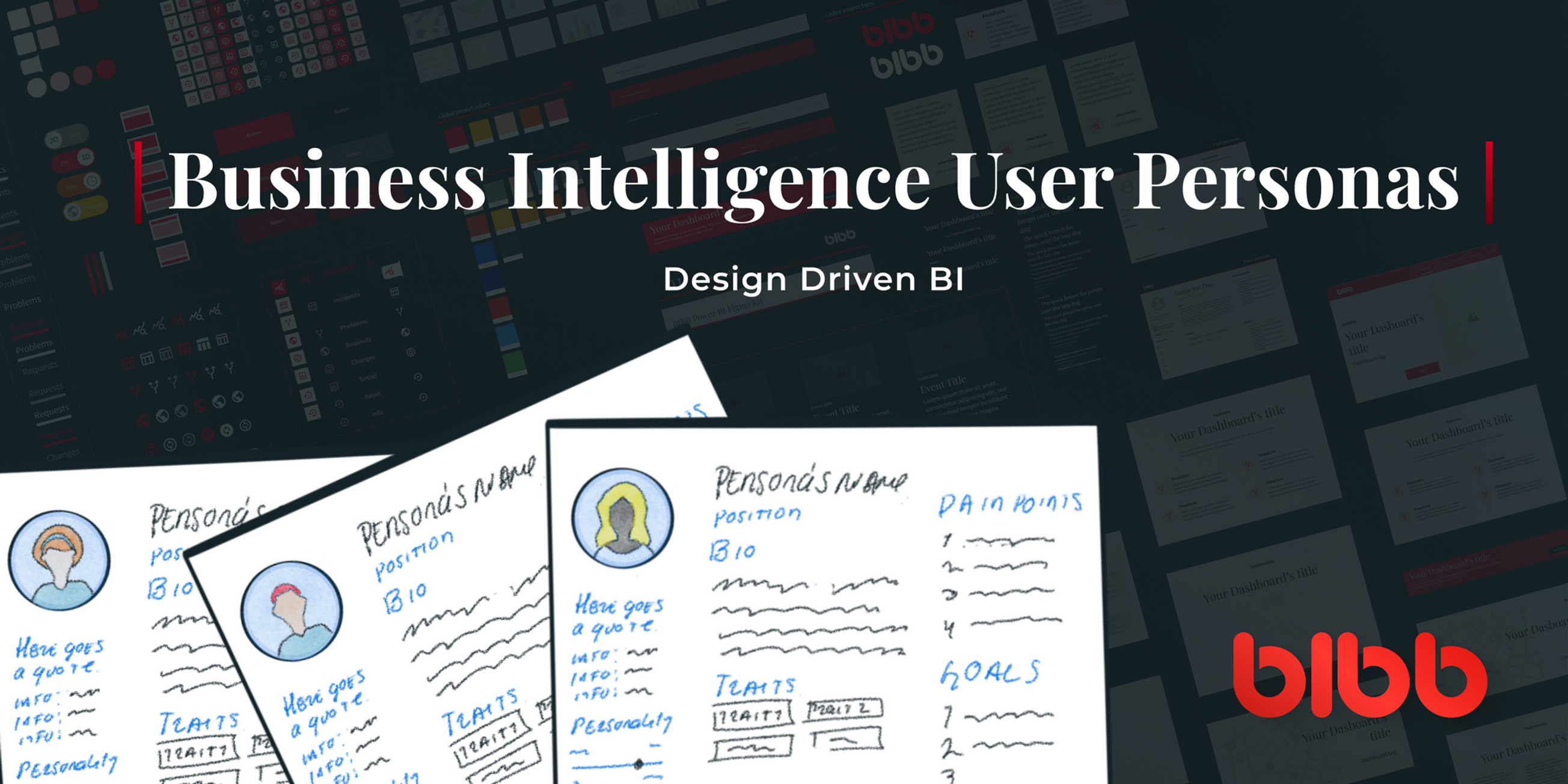The Power of BI User Personas
Impacting development perspectives, from Technical to User-Focused

Visual representation of diverse user personas in business intelligence
User personas are a design tool first popularised in the field of user experience (UX) design in the late 1990s. Alan Cooper introduced the concept of personas, a software design consultant, in his book “The Inmates are Running the Asylum”. In the book, Cooper argued that software developers often focused too much on technical considerations and not enough on the needs and preferences of their users. He proposed the use of personas as a way to bring the user’s perspective into the design process and create more user-centred software.
Since then, the concept of user personas has been widely adopted in UX design and other fields, including marketing, product development, and business intelligence. User personas are now commonly used as a tool to help designers and developers better understand their target audience and create more effective and user-friendly products and services.
What are Business Intelligence (Power BI) user personas?
Business Intelligence (Power BI) User Personas are fictional characters representing the different types of users interacting with our dashboard or analytics report. They are based on accurate data about user demographics, behaviour, goals, and motivations. They are used to help design, develop and market reports that meet the needs and expectations of the target audience.
User personas are essential for an analytics project because they provide a clear and detailed understanding of the users the project is trying to target and help to ensure that your analytics dashboard is designed to meet your users’ needs.
Ultimately, Business Intelligence user personas help you create a more user-centred analytics dashboard design by providing a detailed understanding of your target audience’s needs, preferences, and behaviours. They allow you to design and develop analytics solutions tailored to your users’ needs, helping you increase your solutions’ adoption and usage and providing maximum value to your business.
Process for building personas
There is not a single approach to building personas, but the one I’ve found more compelling is the one I adapted based on Shirley Qiany’s approach:
1. Create a plan
Before beginning the persona creation process, it’s essential to have a clear plan in place. This should include the goals and objectives of the project, the target audience, the types of data that will be collected, and the methods used to gather the data.
The plan that you create should be able to answer the following questions:
- What are the time resources available for the persona creation process? Clarifying this will help you plan the scope and timeline for the project.
- What is the budget for the persona creation process? Understanding the budget will help you plan the resources needed for the project.
- Who are the stakeholders involved in the project? Identifying the stakeholders will help you understand the interests and goals of the different parties involved in the project.
- What is the target audience for the personas? Knowing the target audience will help you focus on creating relevant and valuable personas for your users.
- What are the goals and objectives of the project? Understanding the goals and objectives of the project will help you focus your efforts on creating personas aligned with the project’s overall goals.
By answering these questions, you can create a clear and comprehensive plan that guides the persona creation process and helps you achieve the desired outcomes.
2. Identify data sources and collect data
Once you have a plan in place, the next step is to identify the data sources that will be used to gather data for the personas. This can include sources such as surveys, interviews, focus groups, user testing, and customer data. Once you have identified the data sources, you can begin collecting data from these sources.
-
Surveys allow us to collect data from many users in a relatively short period and can be used to gather data on various topics, including demographics, attitudes, behaviours and preferences. Surveys can be administered online, via email, or in person and can be designed to be self-administered or conducted by trained interviewers.
-
Interviews are a more in-depth method for gathering data for building personas. They allow you to have a one-on-one conversation with users, ask follow-up questions and probe for more information. Interviews can be conducted in person or remotely and structured or unstructured.
-
Focus groups are a type of interview that involve a small group of users discussing a specific topic or issue. They can help gather data on user attitudes and behaviours and generate ideas and feedback. Focus groups are typically led by a trained moderator and can be conducted in person or remotely.
-
User testing evaluates the usability and effectiveness of a product or service by having users perform specific tasks or use the product in a controlled environment. User testing can provide valuable data on user behaviours, preferences, and challenges and help identify areas for improvement in the product or service.
-
Customer data refers to data collected from your customers, such as customer service interactions, online purchasing data, or customer feedback surveys. Customer data can be a valuable source of information for building personas, as it provides insights into the behaviours and preferences of your users.
3. Collect assumptions and form a hypothesis persona
After collecting data from various sources, the next step is to analyse the data and identify common characteristics or patterns among the users. This analysis allows you to form assumptions about your users’ needs, goals, and behaviours and create a hypothesis persona based on these assumptions.
4. Create a persona
The final step in the persona creation process is to use the data and assumptions gathered in the previous steps to create a detailed and comprehensive persona. This persona should include information about the user’s demographics, goals, behaviours and needs and be based on real data rather than assumptions or stereotypes.
What type of information should a persona for an analytics report include?
User personas usually consist of a few critical pieces of information, including:
- Name
- Role
- Demographics (age, gender, location, etc.)
- Behaviours and needs
- Traits
- Personality

User persona example showing key information structure
How to use the personas?
Now you have created your different personas for your analytics/BI report, what do you do with them? Personas can be used in several ways; adapted from Pruitt and Adlin’s approach, personas for an analytics project can be used on different stages:
1. Analytics reports/dashboard planning
Personas can help you identify the key metrics and goals most relevant to the users and design the analytics report to meet the needs and expectations of the target audience. We need to list pain points, ambitions, and expectations to our personas, and by paying attention, we will be able to better plan for the best analytics solutions.
2. Explore analytics reports/dashboards
We must remember that most of the time, we will not be designing our dashboards for ourselves; the solutions we bring are meant for the users of it. This way, the personas will help us design solutions aimed at the users of the reports rather than at us. We need to remember that we build solutions for users, and our design decisions must focus on the personas we crafted. The personas will help us to avoid our own biases towards specific visualisations.
3. Evaluate our analytics reports/dashboards
Personas can help you identify if our development matches the needs of our real users; as we move forward with our iterations in the development process, we need to reflect, with the support of the personas, if the solution is, in reality, covering our user needs.
By using personas, you can ensure that your solutions are designed to meet the needs of your users and provide value to your business. As you progress with the development process, it’s essential to reflect on the needs of your users regularly and use the personas to ensure that your solution meets those needs.
This can help you identify any areas where the solution may need to catch up and make necessary adjustments to ensure that it meets your users’ needs. Using personas to guide your development process helps ensure that your reporting and analytics solutions are tailored to the needs of your users and provide the most value to your business.
4. Support the release of our analytics reports/dashboards
To encourage the adoption and increase usage of big enterprise analytics solutions, diffusion and marketing activities are necessary.
Personas are essential for supporting the release of analytics and business intelligence developments. By understanding the needs and preferences of your target audience, personas can help you identify the most effective strategies for promoting and communicating the value of your solutions to your users. This can include:
- Developing targeted marketing and advertising campaigns
- Creating user guides and documentation and providing training and support to help users get the most out of your solutions
- Help identify potential roadblocks or challenges users may encounter when using your solutions and develop strategies to address these issues
Using personas to guide your release and marketing efforts helps ensure that your users’ analytics and business intelligence developments are well-received and provide maximum value to your business.
In conclusion
Once you have created your user personas, you can use them to inform your analytics dashboard design. You can ensure that your dashboard includes relevant features and information for your users. Additionally, you can use your personas to identify areas where your users might need more help or guidance. By designing an analytics dashboard that meets the needs of your users, you can ensure that they can effectively use the data it provides.
Overall, user personas are a valuable tool for designing and marketing products and services. They are crucial for analytics projects because they help analysts understand the needs and preferences of their target audience. Using user personas, analysts can design and implement analytics projects tailored to the users’ needs and provide the most value for the business.
References:
[1] Cooper, A. (2004). The inmates are running the asylum. Sams.
[2] Qiany, S. (2020, September 23). A Personas Guideline, From What They Are to How To Use. UX Design
[3] Pruitt, J., & Adlin, T. (2006). The persona lifecycle: Keeping people in mind throughout product design. Elsevier: Morgan Kaufmann Publishers, an imprint of Elsevier.

Comments
Share your take or ask a question below.